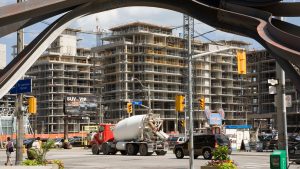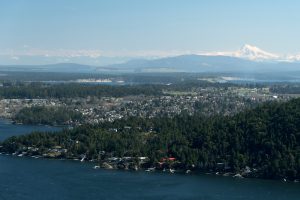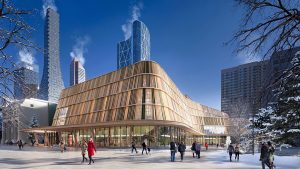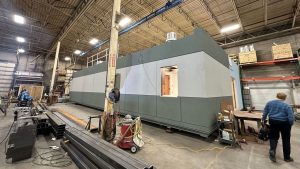Markham, Ont.’s downtown may be but a few decades old, but it has come far from the days it was associated with the farmlands of the 1980s.
Today it is part of the Greater Golden Horseshoe that is emerging as a regional city made up of “very strong downtowns,” Ken Greenberg, principal of Greenberg Consultants, told an audience at a webinar on the latest vision for Markham Centre presented recently by the Urban Land Institute Toronto.
Calling that focus “unique in North America,” he said Markham has been a leader over the past few decades on urban direction.
Greenberg has played a role in Markham Centre’s secondary plan review, calling it “a great opportunity to take stock” of the city’s successes and what other cities have done well through downtown initiatives.
Still, the planning bar can be raised, he told viewers, emphasizing the importance of issues in future development such as mobility (transit as an example) and the creation of “15-minute neighbourhoods” comprised of live-work-play elements with an emphasis on community infrastructure.
Making Markham Centre greener as it becomes denser is also important, Greenberg said, pointing out the pandemic has been a reminder of the importance of parks and open public spaces.
Another key to successful planning, he recommended, is maintaining a variety of residential built forms that foster diversity and inclusion.
Greenberg added the public realm should be at the beginning of planning initiatives, not the end.
He said the three-kilometre branch of the Rouge River in Markham Centre represents an opportunity to become the “organizing spine of the city centre,” allowing nature to play a significant role in the centre’s identity.
York University chose to build its $275 million expansion campus in Markham Centre partly because it is an “opportunity for city building,” said Gary Brewer, president of the York University Development Corporation.
The panellist told the webinar that York’s goal is to promote the integration of the university in an urban environment where faculty, staff and students can study, work, live and socialize.
While strong ties to the municipality and region are important factors in York’s decision to choose Markham Centre, the university’s choice was also because of the downtown’s close connections to industry such as the burgeoning tech field, Brewer pointed out.
“We saw this as an opportunity for new programs to be developed to be responsive to the needs of industries in York region.”
Markham Mayor Frank Scarpitti called the new university campus “a game changer” in the development of Markham Centre.
Panellist Randy Peddigrew, senior vice-president of land development with The Remington Group, said he credits new urbanist Andres Duany for setting the table for Markham Centre’s planning principles today.
Duany brought a 600-hecatre residential mixed-use community called Cornell to an empty field in Markham in the mid-1990s. It was novel for its time.
While planning has evolved since then, the focus on community engagement has remained, Peddigrew told the webinar audience. Remington is the largest land owner in Markham Centre.
He emphasized that public spaces are the “connective tissue” that give a downtown vitality.
Rapid transit’s birthplace in the region was in Markham Centre largely because of a shift to “urbanism” development, spawned largely by the planning principles of Duany’s Cornell, Mary-Frances Turner, president of York Region Rapid Transit Corporation, told the audience.
She said she believes rapid transit along with the 15-minute all-day GO Transit service in the works in Markham will help to facilitate the transformation of developments into engaged communities.
Scarpitti said Markham Centre is aiming to be the largest LEED Certified community in North America.
Reaching that goal is possible partly because of the Markham District Energy model, billed as the only municipally-owned energy utility in Canada, and the municipality’s energy requirements imposed on developments, he said.











Recent Comments
comments for this post are closed